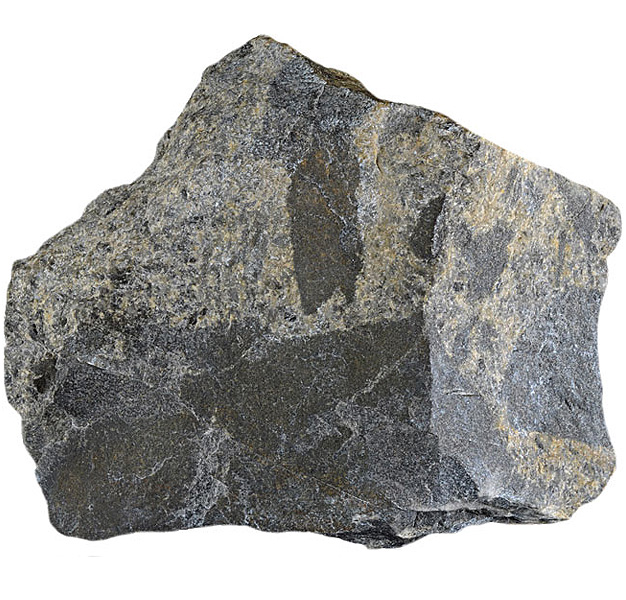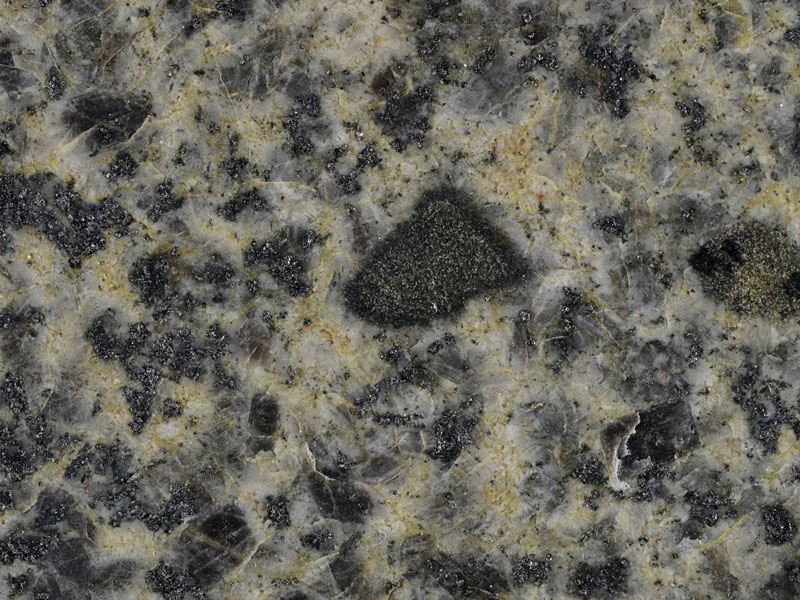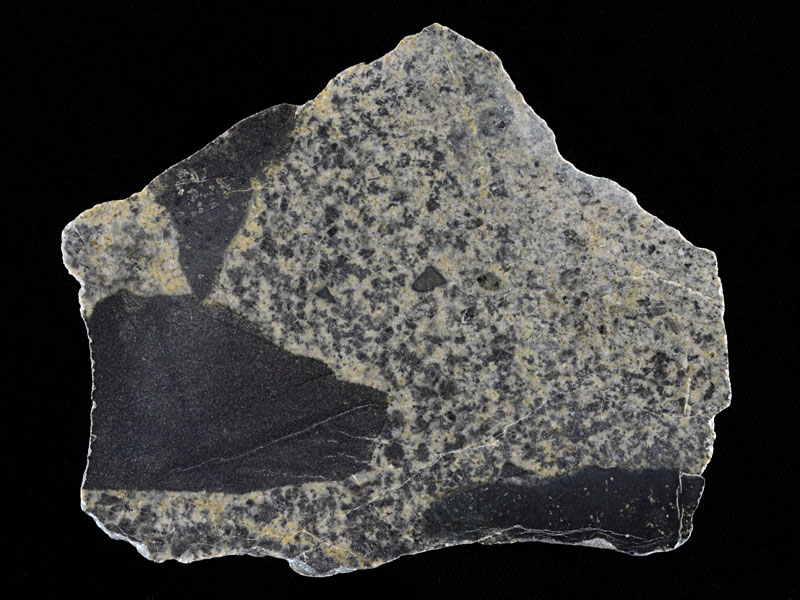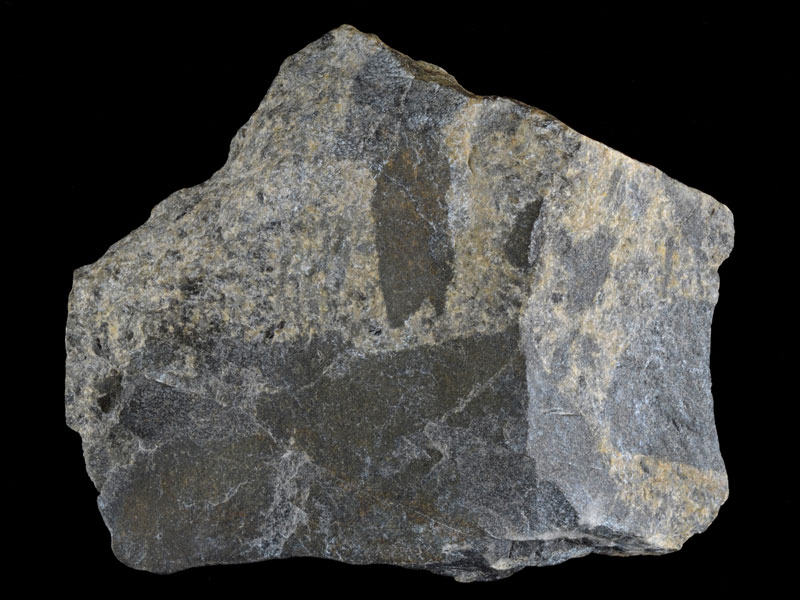
Fact sheet
This sample of intrusion breccia from Harris Bay on the Isle of Rum, Scotland, consists of fragments of thermally-altered coarse grained basic rocks in a finer grained porphyritic microgranitic matrix. In this area of Rum, silicic country rocks (Torridonian sandstones, Lewisian gneisses, and silicic members of Phase1 of the Central Complex) show varying degrees of melting and mobilisation along the contact with the gabbros and ultrabasic rocks. The source of the rheomorphic melt was porphyritic microgranite (Western Granite) in this case.
The thin section is divided into two different rock types. The finer grained areas of microgranite consist of randomly oriented plagioclase and altered alkali feldspar. The central area composed of relic plagioclase phenocrysts with distinctive ‘fingerprint’ textures caused by reaction and partial melting.
The United Kingdom Virtual Microscope (UKVM) collection consists of igneous, sedimentary and metamorphic rocks from around the UK.
It is intended as a teaching resource, helping to tell the story of the common rock types and how they form, and reflecting the history of the UK at the margins of the continent of Europe. The collection is a series of teaching sets, for example igneous rocks from the North Atlantic Igneous Province and SW England; high-temperature metamorphic rocks from Scotland and low-temperature metamorphic rocks from Wales; and sedimentary rocks, including English limestones and sandstones.









